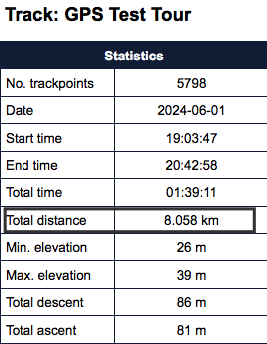Hello,
New Fenix 6 Pro owner here. I've noticed that when using the device to record a Run activity, the distance measured is always a little shorter than Strava on my phone records the same run.
I've set the GPS to record every second, and looking at the track on a satellite map, GPS accuracy seems quite acceptable. Certainly the line sometimes deviates from the road a bit, but for a watch, accuracy seems darn good. The GPS course follows the actual route, turns around at the correct places etc.
So what I don't understand is, with these sorts of small deviations, I would expect that if anything, the watch would be measuring a slightly LONGER distance than Strava (which is using the better antenna in a cell phone, and therefore shows a straighter track with fewer deviations).
So why is the Fenix measuring a shorter distance?
I've found other threads discussing this but they seem to mostly refer to the "trail run" activity. I'm seeing this behavior on the regular "run" activity.
Thanks for any insight!




